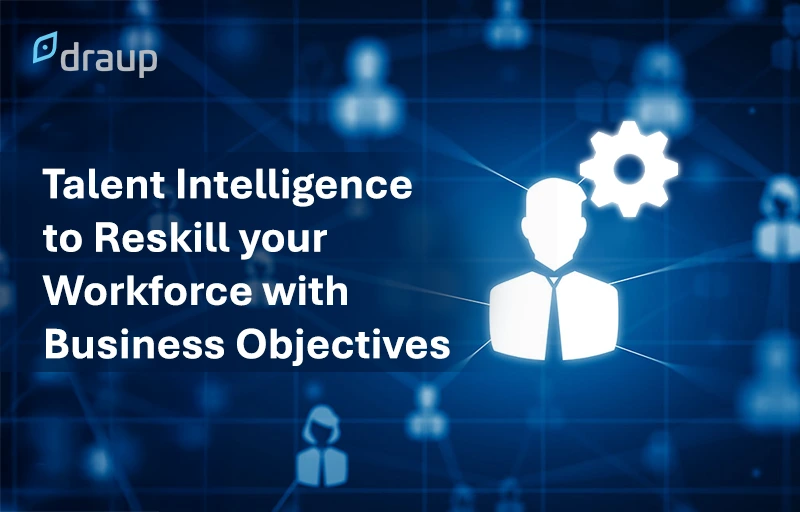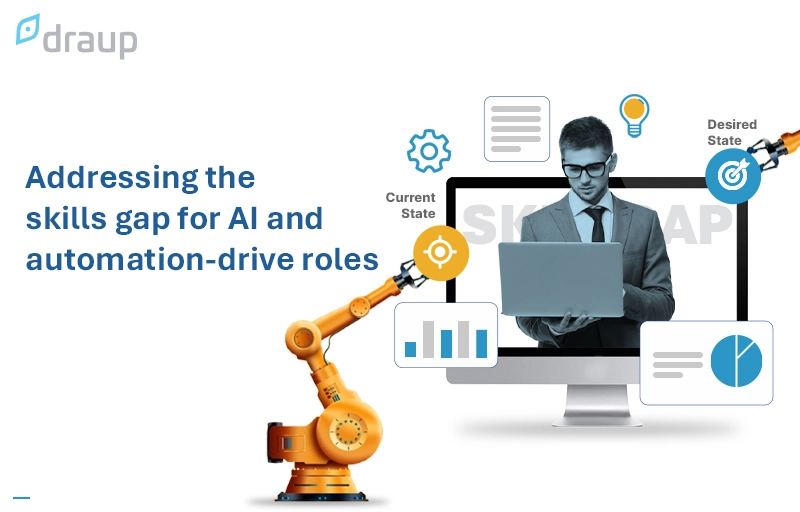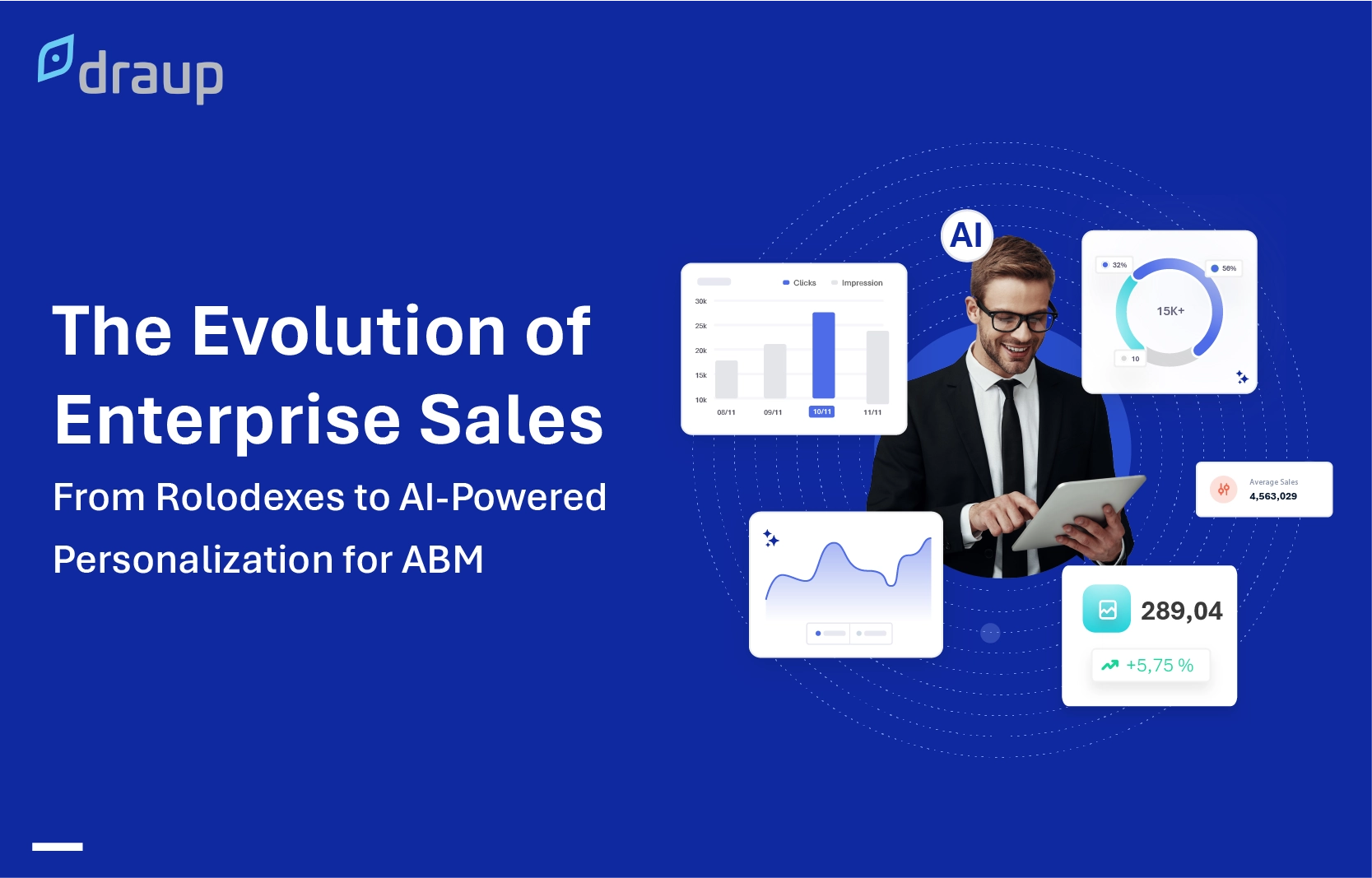As industries evolve at an unprecedented pace, digital transformation has made one thing clear: staying competitive requires a workforce that can adapt to rapidly changing skill demands. Yet, many enterprises struggle to bridge the growing skills gap. Traditional hiring approaches, while sometimes a necessity – are often slow, expensive, fail to address the speed and scale required in today’s market.
A data-driven reskilling strategy powered by a modern talent intelligence platform provides a better alternative. Talent intelligence tools provide insights that can help HR teams to leverage internal talent – to align workforce planning with the current and future business objectives. Workforce planning teams can also use talent intelligence to anticipate skill needs, do location-specific hiring, reduce talent acquisition costs, and ensure that the workforce is future-ready.
Leverage Talent Intelligence to Reskill and Align your Workforce with Emerging Market Trends – A Case Study
Consider the case of a global technology company preparing for a major IoT product launch set to roll out in 18 months. Executing the project required five specialized IoT Cloud Engineers to oversee cloud infrastructure, edge computing, and device integration. However, preliminary market research revealed a significant challenge:
- The skills required for these roles were scarce in the market, particularly in the company’s operational geography.
- Hiring externally would involve long lead times, high costs, and increased competition for talent in a tight labor market.
Instead of relying on external hiring, the company turned to reskilling as a proactive strategy to develop the talent needed internally. This approach allowed them to address the future skills gap while aligning workforce development with their broader strategic goals.
Here is how they did it, leveraging talent intelligence-
Step 1 – Evaluating the Cost of Hiring vs. Reskilling
The company began by comparing the costs and feasibility of external hiring versus reskilling internal employees.
- Challenges of Hiring: External recruitment posed multiple challenges:
- Recruitment, onboarding, and ramp-up times would delay the project timeline.
- High demand for IoT specialists in the market drove up salaries and hiring costs.
- The specific geography lacked a sufficient pool of qualified candidates, further complicating recruitment efforts.
Fig: Talent Intelligence reveals cost of hiring external talent for IoT Cloud Engineer role
- Advantages of Reskilling: Employees already understood company systems and culture, reducing the learning curve and increasing retention.
By choosing reskilling, the company accelerated its IoT expansion, cut hiring costs, and increased productivity by 30% – demonstrating how workforce development can directly fuel business growth.
Step 2: Implementing Targeted Reskilling Programs with Talent Intelligence
With talent intelligence insights, the company identified employees with foundational technical skills and created a structured reskilling program focusing on:
- Cloud infrastructure & IoT platforms
- Edge computing & cloud security
- Data analytics & device integration

Fig: Top Licenses and Certifications to reskill/upskill internal workforce for IoT Cloud Engineer
The training moved from basic cloud concepts to IoT-specific expertise, ensuring a seamless transition into new roles. This strategy not only closed the skills gap but also boosted employee retention by 41% and reduced turnover – a win-win for both business and workforce stability.
Step 3: Leveraging Talent Intelligence to Optimize Workforce Alignment on an Ongoing Basis
To ensure the reskilling initiative delivered maximum business impact, the company used advanced talent intelligence to continuously monitor progress, refine strategies, and align workforce development with project goals.
- Map Workforce Capabilities in Real-Time: By integrating workforce analytics, the company tracked employees’ skill progression throughout the reskilling program. This allowed them to identify gaps early and adjust training content to meet project-specific needs.
- Analyze Digital Transformation Trends: Using advanced talent intelligence tools, the company monitored emerging skill requirements and technology adoption patterns across the industry. This helped them anticipate future skill needs and adjust reskilling programs proactively.
- Benchmark Against Industry Peers: The company leveraged competitive intelligence to understand how similar organizations were building IoT capabilities, helping them validate their reskilling approach and identify best practices for skill development.
How Multidimensional Data Drives Workforce Alignment
To ensure reskilling efforts align with business objectives, organizations must leverage multidimensional data – integrating workforce analytics, market trends, and strategic goals.
By integrating global labor market trends, internal performance analytics, tracking crucial signals and emerging business needs, enterprises can implement targeted reskilling programs that anticipate industry shifts.
This approach ensures continuous workforce alignment, which will map employees’ skills to evolving job roles. It also enhances learning personalization, identifying not just required skills but the most effective learning methods per individual. The data-driven talent mobility ensures employees are placed where they create the highest impact, driving both business growth and workforce adaptability.
Draup is helping companies like Pepsico, Randstad, Vodafone, Paypal, Pfizer, Intuit and many more to understand such trends with Talent Intelligence – factoring in the futuristic software engineering roles required to drive Gen AI led innovation and growth.
Book a demo now!!







